Sponsored content: The value of global infrastructure projects is enormous, but this market also has tough challenges. ║├╔½Ž╚╔·TV invited a panel of experts to debate the issues at the Infrastructure Executive Forum
UK consultants are well placed to capitalise from trillion-pound investments in global infrastructure but a lack of finance is stymying markets closer to home.
These were the key themes to emerge at ║├╔½Ž╚╔·TVŌĆÖs first Infrastructure Executive Forum held recently in London.
Global consultants joined investment bankers to discuss the state of project finance and to identify the next wave of emerging economic and high-growth infrastructure sectors.
Investing long-term
After the gloomy assessment of the current investment climate (see, How finance delivery broke, below) panel members looked at solutions to unlocking private sector project finance.
Berwin Leighton PaisnerŌĆÖs Mark Richards said the government could do more to stimulate long-term investment by providing a ŌĆ£clear, coherent and independent regulatory frameworkŌĆØ for industries such as water, transport and energy. He said cancelling the third runway at Heathrow sent out the wrong signal to the investment community: ŌĆ£If you start messing with the regulated assets it will turn off the investor community.ŌĆØ
Richards said the National Infrastructure Plan (NIP) is a step in the right direction as it makes it clear to investors what sectors the government is focusing on, though it lacked detail on how the investment gap would be bridged.
Bond is back
The panel highlighted two initiatives to kickstart the funding of infrastructure through bonds: EU project finance bonds and the HadrianŌĆÖs Wall Capital Product.
The EUŌĆÖs proposed project bond aims to enhance the credit worthiness of infrastructure bonds by using the European Investment Bank (EIB) to guarantee up to 20% of the project value. If the project was unable to generate sufficient cash to service its debt the EIB would step in with funds.
KPMGŌĆÖs Richard Threlfall said there is a discussion in the Treasury about the Green Investment Bank providing the equivalent of EU project bonds. ŌĆ£For government to take out that slice of risk is absolutely the simpler, most efficient thing to do,ŌĆØ he said.
The HSBCŌĆÖs Katrina Haley said that the government should put forward a pilot project to demonstrate the benefits of bonds. The HadrianŌĆÖs Wall product is a fund
that guarantees around 10% of a projectŌĆÖs funding requirement, which predates the EU project bond.
The future for these types of products looks promising, said BLPŌĆÖs Richards, and credit ratings agency Fitch reported that the EU project bonds could improve credit ratings of large infrastructure projects and allow institutional investors back into the market.
With the government planning to fund 70% of its ┬Ż200bn infrastructure plan through private sector funding, such as project infrastructure bonds, these methods of leveraging project finance wonŌĆÖt come a moment too soon.
The new gold rush
The second forum panel focused on where the estimated $60tn (┬Ż37tn) of global infrastructure was going to be built, and the emphasis was East, not West.
The Middle East was still seen as having growth potential despite the uncertainty of the Arab Spring. Enrst and YoungŌĆÖs Malcolm Bairstow identified huge opportunities in Saudia Arabia, Kuwait, Qatar, Iraq, Afghanistan, and potentially Libya.
Nick Field of URS Scott Wilson was concerned about the ŌĆ£momentous changesŌĆØ in the Arab world. ŌĆ£Qatar is stable and Bahrain is always on the edge, but the real worry is Saudi Arabia which has high unemployment.ŌĆØ
There was a difference in views on the Chinese market. Field was worried Chinese firms could pose a competitive threat: ŌĆ£WeŌĆÖre now seeing Chinese contractors on the world stage and theyŌĆÖre beginning to innovate.ŌĆØ But Norman Anderson of CG/LA said that China still had a long way to go, and would need outside help. A comment that seemed to be borne out by news last week that Arup had signed a deal with the China Railway Group to pool resources in pursuing global infrastructure opportunities.
Leveraging growth
Forecasts for huge growth in global populations was the underlying reason for infrastructure growth said Foster + PartnersŌĆÖ Huw Thomas. Demand from the new middle classes is unrelenting, he said, and this is driving urbanisation and the demand for energy, water and transport infrastructure. ŌĆ£Five to seven years ago our clients saw what was happening and they started investing world-wide,ŌĆØ he said.
Thomas said there are great opportunities to use infrastructure to leverage more investment in the local economy. He cited Saudi Arabia, where new sustainable cities are being planned along high speed rail lines.
Thomas believed UK consultants have the ability to unlock secondary value around infrastructure investments: ŌĆ£Our ability to innovate is very important.ŌĆØ He saw particular opportunity around transport hubs, such as ports and airports and said that more infrastructure could be leveraged through the extractive and energy industries. He said energy investment could unlock investment: ŌĆ£The thinking about the way we tackle energy allows us to look at other things. Energy is a Trojan horse. It will allow us to develop around energy plants.ŌĆØ
In the UK the panel said the focus was more on getting the most from existing assets than building shiny new infrastructure. Field said that the UK was investing only when absolutely necessary, such as in energy now when weŌĆÖre about to run out of power.
Around existing infrastructure KPMGŌĆÖs Threlfall saw an opportunity to link up underused airports. ŌĆ£We donŌĆÖt have to build a new airport on Boris island. ThereŌĆÖs no reason why we canŌĆÖt use existing runways.ŌĆØ
Project manager super-league
The good news is that UK consultants are well placed to win the ┬Ż1tn of global infrastructure work over the next five years, according to Ernst & YoungŌĆÖs Bairstow. He said there is an emerging global super-league of delivery partners and project managers which includes many UK companies.
ŌĆ£We have fantastic iconic design brands such as Fosters, Rogers and Arup. ItŌĆÖs a strong competent in the UK,ŌĆØ said Bairstow. ŌĆ£But we should be better at productising what we do. We sell great project once but thereŌĆÖs no repetition.ŌĆØ
CG/LAŌĆÖs Anderson said the UK should build on well-known brand values. ŌĆ£You see UK firms leading the way in many places around the world. There is a giant opportunity to brand UK infrastructure and use it to strategically push higher level projects around the world.ŌĆØ
It looks as though many of the UKŌĆÖs construction professionals will be living away overseas for a while yet. Until the government can unlock global private sector finance there will be limited UK investment, which means consultants will be going global with their blue chip brands to build infrastructure for the next generation of global superpowers.
How the finance delivery model broke
The 2008 global financial crisis hit government capital spending budgets and reduced the private sectorŌĆÖs ability to lend. An important source of finance disappeared with the demise of ŌĆ£monolineŌĆØ insurers following the credit crunch according to the panel. These insurers provided credit guarantees for government infrastructure bonds and monitored them on behalf of institutional investors who didnŌĆÖt have the resources to do it themselves. With monolines providing guarantees, risk-averse pension funds and insurers were able to invest in projects such as the ┬Ż2bn Allenby and Connaught, MoD barracks.
This pipeline of finance broke when monolines became exposed to bad debt long term. Without access to bonds the market now relies more heavily on bank loans. Since 2008 banks have had to limit lending to ensure they have sufficient liquidity to absorb unexpected financial shocks, and the rules on liquidity are set to get tougher. Lending rules for insurers were also being tightened from 2013, as part of an EU regulation, which aims to reduce the risk that insurers would be unable to meet claims.
Panels
Panel on UK infrastructure finance
Norman Anderson, president and chief executive, CG/LA
Richard Threlfall, UK head of infrastructure, building and construction, KPMG
Katrina Haley, head of structure bonds, EMEA, HSBC
Mark Dooley, senior managing director, Macquarie Capital
Mark Richards, partner, project finance, Berwin Leighton Paisner
Panel on infrastrucutre opportunities
Malcolm Bairstow, global construction and infrastructure leader, Ernst & Young
Huw Thomas, Foster + Partners
Andrew Stevenson, head of transport, Davis Langdon, an Aecom company
Nick Field, global head of project and programme management, URS Scott Wilson
The event was in association with Berwin Leighton Paisner and URS Scott Wilson and supported by Davis Langdon, Ernst & Young and Foster + Partners






















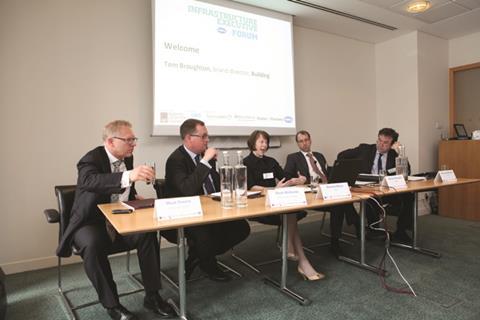
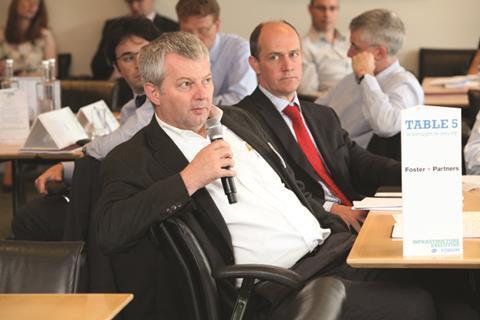


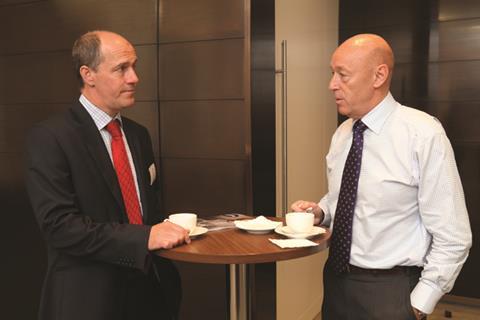


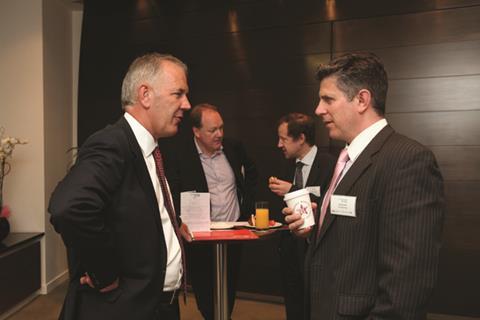
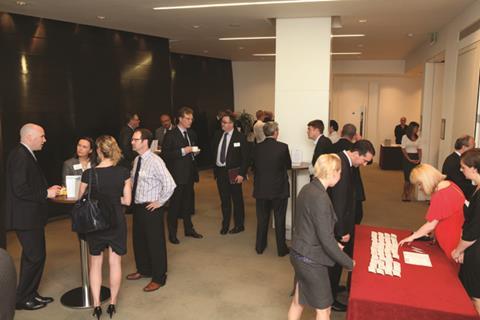
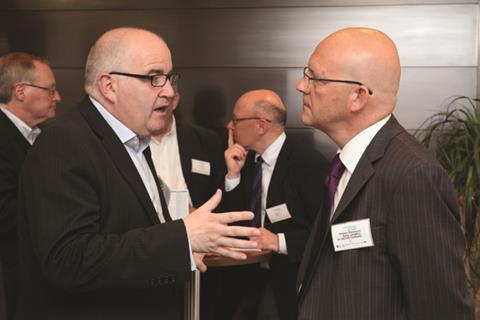
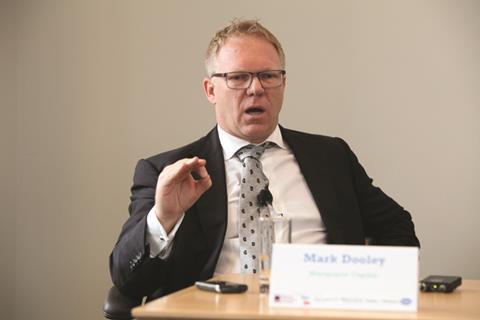






No comments yet